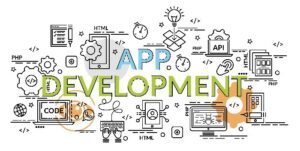Development teams and enterprise IT teams are often at loggerheads with one another, not because they can’t get along, but because their goals and objectives are sometimes misaligned.
Enterprise IT aka the “Resource Police”

Ask developers and they’ll say they just want an API so they never have to talk to anyone in IT. Why? Because they just want to write code and they’re frustrated with their current experience and bureaucracy. From the developers’ point of view, enterprise IT are the “resource police”, taxing them with slow, out of date processes and procedures, impacting their drive to write code and create value for the business in new and creative ways, in the fastest time possible. But for the enterprise IT team, it’s just not practical to hand over APIs for everything that developers want. They recognize the need to support the development teams, yet their goals and objectives drive them to ensure security, control, resiliency and lifecycle management of resources through ticketing – which are often the very processes that tend to slow the developers down.
So in a way, the developers are right!
The Heart of Digital Business
Solving this dilemma takes a bit of a twist on thinking. Watch any commercial on TV and  you can’t help see a common theme from insurance companies, to hotels, buying a car, applying for a loan and more. There’s a huge focus on making it extremely easy for customers to get what they want in the fastest time possible.
you can’t help see a common theme from insurance companies, to hotels, buying a car, applying for a loan and more. There’s a huge focus on making it extremely easy for customers to get what they want in the fastest time possible.
So why should developers be any different? They’re internal customers after all and developers are at the very heart of how these organizations are delivering these cool user experience focused apps, iterating quickly to add new features and capabilities. In the modern digital economy, developers are essential to how companies are differentiating their value in the market.
Here’s where the twist comes in. Enterprise IT needs to think about solving this dilemma from the developers’ point of view – figure out how to give them the best experience possible, period! Now this doesn’t mean a catalog and ticketing portal where they answer 20 questions or fill out all kinds of forms for the IT team. That makes it easy for the IT team, not the development team.
So What Does ‘Good’ Look Like?
 We believe our customers need to deliver a modern development productivity hub to address these challenges. Our expertise leads us to these key tenets for delivering this developer obsessed experience:
We believe our customers need to deliver a modern development productivity hub to address these challenges. Our expertise leads us to these key tenets for delivering this developer obsessed experience:
- Change the focus from requesting and ordering stuff in a catalog to helping developers start working on their project in the fastest time possible. Let me use an analogy: shift from asking developers to order ingredients and bake their own cake to just letting them order cake – or eat cake, if they like!
- Enterprise IT needs to deliver a CI/CD pipeline which provisions environments, installs and configures all necessary software, establishes connections to the DevOps toolchain and is permissioned and ready for the developer to start working.
- Behind the scenes (invisible to the development team of course), the IT team can still organize their services in catalogs, enforce operational policies, issue tickets for tracking progress and update their CMDBs, while providing additional orchestration in order to deliver the experience developers want.
- Deliver persona-based dashboards that aggregate data from the entire toolchain to provide all stakeholders with visibility into the status and progress of every aspect of the development lifecycle, eliminating the need for a myriad of emails, meetings and constant nagging of the developers.
- All of this needs to be done with a consumer-grade, mobile-enabled experience – fast and simple – from the development teams’ point of view.
Reality Check, Please
But will this make the enterprise IT teams’ life a living hell to manage? Not at all.
 The IT team still has the control they need, while delighting the development team. There’s no more hesitation from the development team to give up resources because they know they can get them again quickly. The IT team can enforce strict lifecycle management, which helps them meet their security, patching and operational objectives, but not at the expense of the developers’ experience. The IT team has happy, productive developers, while at the same time they gain visibility into real resource usage and the demand for automating and integrating the toolchain. This makes it easier for the IT team to plan and deliver even better experiences for the development team.
The IT team still has the control they need, while delighting the development team. There’s no more hesitation from the development team to give up resources because they know they can get them again quickly. The IT team can enforce strict lifecycle management, which helps them meet their security, patching and operational objectives, but not at the expense of the developers’ experience. The IT team has happy, productive developers, while at the same time they gain visibility into real resource usage and the demand for automating and integrating the toolchain. This makes it easier for the IT team to plan and deliver even better experiences for the development team.
Does this sound like nirvana to you? Something unattainable in the real world? Well, it’s not.


